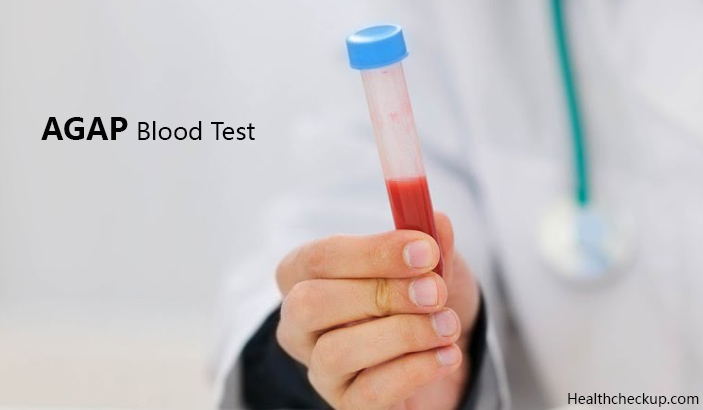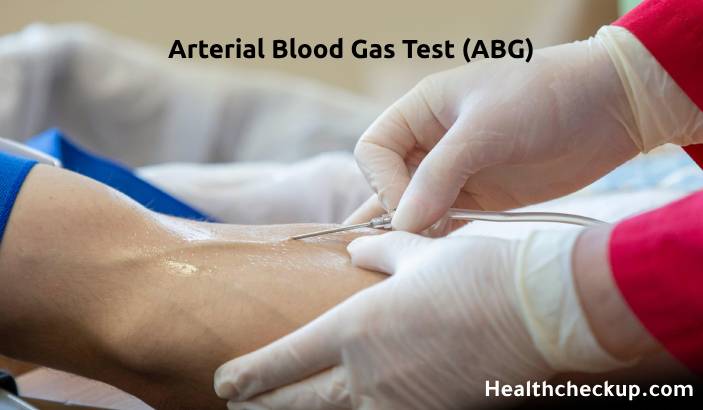AGAP is the abbreviation for the term Anion Gap. It is the measurement of the ions present in your blood with either positive or negative charges. Whenever there is an excessive acid found in your blood, there is an increase in the Anion Gap. The presence of high acid in the blood is due to the unsuccessful elimination of acid through your kidneys and lungs. It is essential to undertake the AGAP blood test to monitor the level of acid in the blood.
What is AGAP Blood Test All About?
The blood test examines the presence of the electrically charged particles in your bloodstream. The test aids to diagnose any acid based issues in your system. The charged particles in your blood, like chloride, sodium, and bicarbonate provide the anion gap equation important for the healthcare to know about. The AGAP blood test can monitor the condition of acidosis and alkalosis. Mainly, acidosis is considered to be life-threatening and must be treated soon.
Symptoms of Acidic Level Imbalance In The Blood
When there is an excess level of acid in the blood, several signs show up. Some of them include:
- You will suffer from low blood pressure.
- The respiratory inability, where you will be unable to hold your breath
- Fatigue or weakness
- Abnormal heartbeat
- Nausea or vomiting
- Accumulation of fluid in the body or edema
- Confusion
The Other Tests That you Might Need to Undertake
There can be several reasons involved that affects your blood’s acid-base balance. Hence, the doctor might suggest for additional tests and scans as well. They include:
- Lactate and glucose
- pH levels
- Creatinine
- Carbon dioxide
- BUN (Blood Urea Nitrogen)
AGAP Blood Test Preparation
Anion gap blood test does not require any specific preparation. You will not be asked to fast for several hours before the test unless the AGAP blood test has to be done along with other blood tests.
You need to consult your doctor regarding withholding or discontinuation of certain medications before the test. While preparing for any blood test which does not require fasting, it is important to drink plenty of water before going
AGAP Blood Test Procedure
Anion gap blood test is often advised when a patient is admitted to the hospital as a result of one or more of the following conditions:
- Abnormal heartbeat
- Unusual drowsiness and confusion
- Excessive diarrhea or vomiting causing dehydration
- Shortness of breath
AGAP blood test requires collection of a blood sample.
The procedure for performing an anion gap blood test is as follows:
- The patient is required to lie down or be seated with arm resting over a surface.
- The nurse ties a tourniquet to the arm above the site from where blood has to be collected.
- The area of vene-puncture is cleaned and made sterile by using alcohol.
- A sterile syringe is used to collect blood. The needle is inserted into the vein. This may feel like a slight pin prick.
- Blood sample is collected in a vial and sent to the laboratory for testing.
- The vene-puncture site is covered with a small cotton swab. The patient is supposed to apply slight pressure over the site to prevent blood from oozing out.
AGAP Blood Test Results and Interpretation
Normal reference range for anion gap – 3-10 mEq/liter.
Any value of anion gap blood test below or higher than the normal reference range is considered to be abnormal and requires immediate correction and appropriate treatment.
Low Anion Gap
It means a condition in which the blood has low acid and high base content. Low AGAP is a rare finding is often due to laboratory errors. Retesting is usually advised if low anion gap is observed.
However, low anion gap can occur as a result of hypo-albuminemia (a condition of low albumin in blood).
The condition of a low anion gap is called alkalosis and it can occur in the following cases:
- Recent surgery
- Malnutrition
- Burns or severe injury
- Sepsis
- Kidney or liver disease
Low Anion Gap Diagnosis
It is a sporadic condition when you might have to suffer from a small anion gap. There are specific factors responsible for it.
Hypoalbuminemia
The condition indicates that there is a low level of protein in your blood. Some of the reasons behind low protein level in the blood include
- Cancer
- Kidney disease (low anion and lupus is quite a common factor)
- Burns
- Liver disease
- Hypothyroidism
Monoclonal and Polyclonal Gammopathy
The condition is referred as immunoglobulins, which is the presence of the excess of proteins in the blood. LG is one of the types of immunoglobulins can lead to low anion gap value. Multiple myelomas might be associated with monoclonal gammopathies. Surprisingly, there are so many inflammatory diseases that might be related to the condition, polyclonal gammopathies. To diagnose your condition, the doctor will prescribe with AGAP blood test to monitor the levels of immunoglobulins.
Intoxication of Bromide
There are some medications, both sedative and herbal with the presence of bromide. When high bromide dosage is consumed. It can interfere with the calculation of chloride in the test. Hence, the combination of low anion gap high chloride can mismatch the entire report result. You will receive a false low anion gap value. Therefore, it is better to inform the doctor regarding your medication.
Lithium
In case, you are receiving the treatment for bipolar disorder, you are prescribed with lithium dosage. In fact, you have a high concentration of it. The low anion gap result can show false reports.
Error in a Laboratory Report
Last, but not the least, a doctor might recommend for another AGAP blood scanning if the lab report suggests low anion gap value. Often there are laboratory report errors that indicate low levels of anion gap value.
High Anion Gap
it is a condition in which the blood has too much acid and less base content. A state of high anion gap is called acidosis that can occur due to the following conditions:
- Respiratory disorders such as pneumothorax, asthma, obstructive sleep apnea
- Myasthenia gravis
- Guillain-Barre syndrome
- Uncontrolled diabetes mellitus – diabetic keto-acidosis
- Acute or chronic renal failure
- Excess diarrhea or vomiting (loss of body fluids)
- Starvation
- Excess alcohol consumption – alcoholic keto-acidosis
- Drug over dose
- Lactic acidosis – build up of lactic acid in blood
AGAP blood test provides valuable information regarding pH status and acid-balance of blood at a given time. Yet, it is rarely performed singly. AGAP blood test is frequently done along with other blood tests for the purpose of:
- To diagnose the condition causing low or high anion gap
- To assess the severity of underlying condition which may cause a low or high anion gap.
What Does It Mean If You Have A High Anion Gap?
There are different standard ranges for anion gap, but incompatible with different laboratories. The standard rate varies between 3 to 10 mEq/L. When your range is more than 10 mEq/L, it is considered more acidic and refers that you might be suffering from acidosis. Certain conditions influence the high anion gap value in the blood.
- Urea in the blood
- Aspirin overdose
- Ethylene glycol poisoning
- Diabetic ketoacidosis
Treating Low Anion Gap
Having low anion gap value is a rare condition. In case, the tests have confirmed for low anion gap value, your doctor will prescribe with several other criteria. This will help in the diagnosis of the underlying factor and thereby fix low anion gap with the right treatment. In case, it is found that the cause of your lower anion gap is due to medications with ingredients like bromide or lithium, adjustment of dosages will be prescribed.
Will there be any Genre of Preparation Required for The Test?
Perhaps the best part about this blood test is that you don’t need to take any special preparations, unlike the other blood tests. But, in case, you are allergic to latex, you must inform the doctor. Furthermore, if you are under any medication, it must be given prior intimation as well. This process is mainly conducted so that there are no interferences with the test results.
Medically Reviewed By








